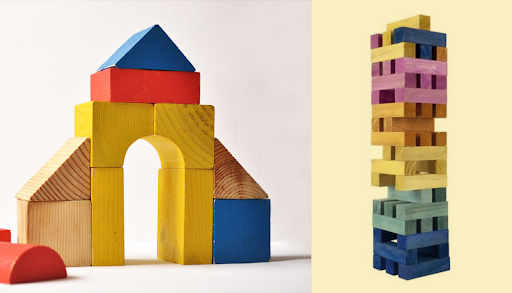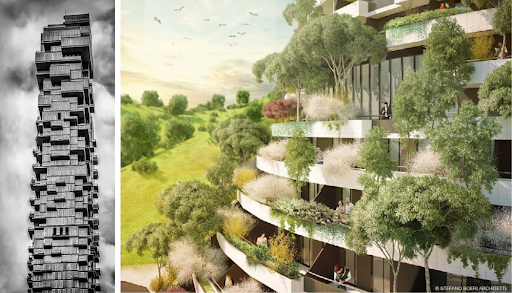Why focusing on biodiversity architecture is key to building better.
Micène Fontaine, August 18, 2021
1976: I was about one year old when I first played with brightly colored wooden shapes. Chances are you were about the same age when you had a similar experience. I imagine I tried stacking these blocks on the back of the family pet or the shag rug before realizing that a stable surface works best - though far less fun to a toddler. There is a lot of learning embedded in this simple game. Lesson 1: Stacking works best on a stable foundation.

A few years later, in the early 80s, the game Jenga came along, and I learned alongside millions of other players that there are only so many building blocks I can remove before the stack comes crumbling down. Lesson 2: Extract too much, and things get off balance.
Nothing controversial or new about these first two lessons. Especially not for design professionals who have been playing a full-scale game of Jenga for a very long time. A decade goes by before we see Jenga architecture popping up in cities across the world. While unrelated to the game, these buildings provide visual reminders of the precarious balance between the built environment and nature. Lesson 3: There is a tipping point.
Fast forward to 2021, and there is increasing awareness that 40% of CO2 emissions derive from the building industry. The cause: Too much focus on individual Jenga blocks rather than on how these building blocks interconnect and interact. How they either deplete or replenish the natural life-sustaining ecosystems into which they are embedded. Some architects, like Ken Yeang, have been working on "the creation of 'benign' built forms that compliment and work within the planet's delicate biosystems" for longer than I’ve been alive Lesson 4: It's all connected. We - as humans - are here courtesy of this delicate balance.

When things come crashing down in a game of Jenga or with brightly colored wooden shapes, the cause is known, visible, and easily reversible. In the built environment, engineering failures happen. And, as tragic as these are, they remain isolated events. More problematic for our long-term survival as a species is how the built environment affects the balance of the planet's ecosystems and the biodiversity required for these ecosystems to thrive.
The synergies are far more complex, much less visible, and the consequences far more severe. We also have decades of research on this topic and more ways than ever before to build in a way that promotes life. Lesson 5: Time to recalibrate the relationship between the built environment and the natural world. Time to strive for symbiosis and regeneration over depletion.
Here are five bite-size lessons to “build better” for tomorrow - by design. Share yours in the comments below and, for a deeper dive, check out our "4 Pillars for Building Better" and our "Nature-Based Solutions" Change by Design sessions.




